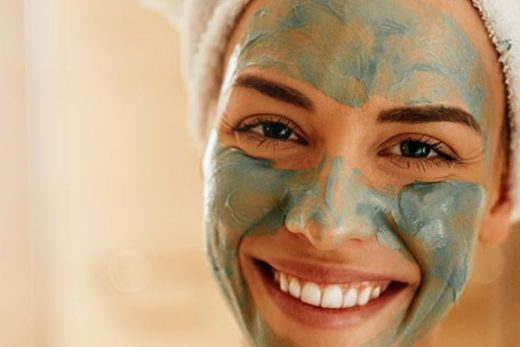You only have to glance at Bridgerton’s elegant Regency ladies (or Rosie Huntington-Whiteley) to know that the neck is an unheralded erogenous zone. A surprisingly delicate area, the skin here is inclined to age faster than its facial counterpart, but is often neglected. While many of us religiously cleanse, hydrate, and treat our faces, our necks often go without.
Why do we need to look after our necks?
The neck lacks sebaceous glands and tends to be less oily than the face. Sebum is very helpful in minimising signs of ageing – oilier skin types will usually have fewer fine lines and wrinkles than those with dry skin types, for example. This is compounded, as we age, by a laxity in the strong neck muscles and connective tissues, which causes a ‘turkey neck’. Thanks to thinner skin, the area is also more prone to environmental stress.
Skin ageing in general begins around the age of 25, when collagen starts to break down at 1 to 1.5 per cent a year (accelerating in menopause), and the neck falls prey to a lack of elasticity, firmness and texture. Often you can see these signs from the age of 30. “Crepiness is a very common concern among patients – that change in skin quality that is often more apparent when we move and also makes the neck look a little dry and scaly. And ‘turkey neck’, which is usually due to loosening tissues offering less support for the fat pad under the chin, as well as shrinking jawbones offering less tension in the neck tissues.”
The curse of tech neck
And then, of course, there is tech neck and “necklace lines”, which also get on our nerves and have become increasingly prevalent in the last 10 years, a time in which staring down at our screens has become an hourly – or minute-ly – occurrence. “Our heads are pushed forward and therefore sagging of the muscle begins, as do wrinkles,” explains cosmetic acupuncturist, Sarah Bradden. “When the neck area becomes more lax, it has a real pulling down effect on the rest of the face, including a turndown of the mouth and heavier jowls.”
Sally Penford, UK director of education at Dermalogica, also points out that when our platysma muscle (the big muscle that connects the jawline to the shoulders) is constantly stretched, the fascia (or connective tissue) beneath it becomes stressed, dry, dehydrated and physiologically fixed in place; this also impacts how the skin above it looks.
What are the best treatment options for the neck?
As with most areas of the skin, a combination of treatments and preventative methods offers the best results. Wearing SPF is essential day-to-day, and a dedicated neck cream can help cater to all manner of skin concerns in that area.
Massage
“Keeping the neck as youthful as possible (and therefore matching your face) requires massage and a lot of hydration. When working from home, take some daily steps to help slow the ageing process on the neck. Ensure you are stretching it out and rotating the shoulders at different times of the day,” explains Bradden.
For an excellent and easy massage pre-bed, apply around two teaspoons of facial oil (we love Decléor’s Green Mandarin Aromessence Glow Serum) and use your knuckles to make circular movements over the upper chest. Then, using one hand at a time, use your fingertips to make kneading, squeezing movements across your shoulders to the large trapezius that helps support the head. Then, with flat fingertips, apply firm pressure (and circular movements) on the muscles either side of the spine from the base of the skull to the base of the neck.
After that, space out your fingertips and apply firm pressure along the top of the jawbone, from the chin outwards, moving upwards in rows over the cheeks. Repeat each movement until the last row, finishing on top of the cheekbones.
Botox
“We can use Botox in the strong platysma muscle to relax it,” explains Dr Shotter. “This muscle often becomes stronger as we age as the shrinking jawbone allows it to pull more strongly. Each time it contracts, it pulls our tissues (including our lower face) downwards.”
Fillers
“For many people, facial fillers will make a huge difference to the neck. To combat gravity pulling the face down, it helps to restore structure in the cheeks, chin and jawline to improve the neck,” says Dr Shotter.
Profhilo
“This is one of my favourite treatments for necks. It will improve crepiness, tech neck and the neck contour itself. Necks tend to need more sessions than the face for best results. I recommend three sessions a month apart.”





